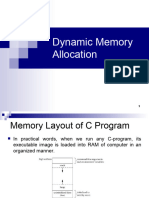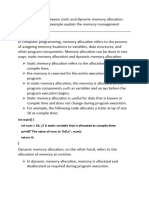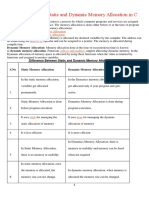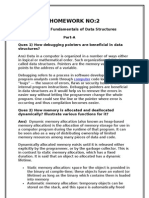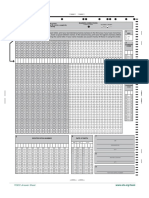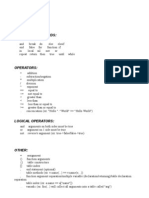0% found this document useful (0 votes)
14 views11 pagesDynamic 1
The lecture notes cover dynamic memory management in C, detailing the importance of allocating and freeing memory during program execution. It explains various memory management functions such as malloc, calloc, realloc, and free, along with their prototypes and coding examples. The document also discusses the memory layout of a C program, including the text segment, data segments, heap, and stack, emphasizing the flexibility and efficiency of dynamic memory allocation.
Uploaded by
RaonarCopyright
© © All Rights Reserved
We take content rights seriously. If you suspect this is your content, claim it here.
Available Formats
Download as PDF, TXT or read online on Scribd
0% found this document useful (0 votes)
14 views11 pagesDynamic 1
The lecture notes cover dynamic memory management in C, detailing the importance of allocating and freeing memory during program execution. It explains various memory management functions such as malloc, calloc, realloc, and free, along with their prototypes and coding examples. The document also discusses the memory layout of a C program, including the text segment, data segments, heap, and stack, emphasizing the flexibility and efficiency of dynamic memory allocation.
Uploaded by
RaonarCopyright
© © All Rights Reserved
We take content rights seriously. If you suspect this is your content, claim it here.
Available Formats
Download as PDF, TXT or read online on Scribd
/ 11












